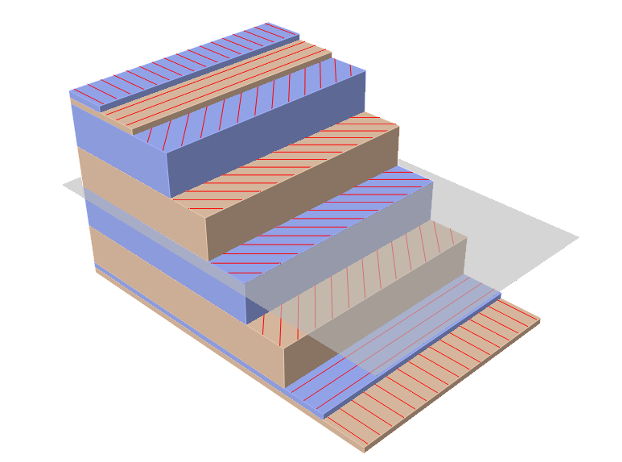Key Technology Lightweight Construction – CFRP and GFRP Enable Strong, Robust and Above All Lightweight Components
In times in which energy efficiency and sustainable use of resources are a central theme in product development, lightweight construction and thus the use of fiber composites such as CFRP (carbon fiber reinforced plastic) and GFRP (glass fiber reinforced plastic) is becoming increasingly important. It’s because these high-tech materials are versatile, robust, easy to process and above all one thing: lightweight.
Lightweight construction – some even speak of it as a design philosophy – makes it possible to significantly reduce the amount of material used and thus also the costs. Starting with the production, less resources are required. Even later in their service life, the products consume less energy and cause fewer emissions. Nevertheless, this design method also brings challenges with it.
Existing products often have to be rethought from scratch, because many design specifications can only be realized using modern materials such as CFRP and GFRP. In contrast to conventional materials, their component properties can be influenced by a targeted symmetrical or asymmetrical layer structure. The product quality can be increased by deliberately changing the product properties.
Accordingly, lightweight construction starts at the product development stage and leads to a change in the entire value chain. In order to be able to use CFRP and GFRP efficiently, numerous variants must usually be tested under a wide range of load conditions.

Our service portfolio in the field of CFRP/GFRP
To keep development costs as low as possible, we use FE simulation. Using virtual prototypes, for example, component strength and material usage can be cost-effectively optimized.
The advantages of CFRP and GFRP – including the low dead weight, high strength and rigidity, high dynamic load capacity and robustness as well as excellent fatigue strength – can be optimally exploited by integrating the following FE simulations into the product development process:
- Static strength analyses
- Dynamic strength analyses
- Variant calculation for optimum layer structure
- Service life and damage
We support you either by taking over individual tasks or by covering the entire process chain. We also advise you on questions of optimal alignment, layer structure or strength.
Through a wide variety of lightweight design concepts and the versatility of fiber composites, we can therefore help you to optimally adapt components to the corresponding requirements and applications. In doing so, we build not only on the experience of more than 45 years of numerical simulation, but also on the knowledge gained from various research-related projects in which we have been involved in recent years.
PLEASE CONTACT ME PERSONALLY
________
I am happy to support you with numerical simulations and advise you on the development, optimization and automation of your simulation processes.
Mechanical Engineering, TU Darmstadt
Dr.-Ing.
Mastering the variety of technical challenges together with our customers and with the Wölfel team through innovative solutions.



![[Translate to English:] [Translate to English:]](/fileadmin/_processed_/9/a/csm_Windenergie_01_Schall-laerm_1000_875_a53e13e186.jpg)

![[Translate to English:] Sitzkomfort [Translate to English:] Sitzkomfort](/fileadmin/_processed_/6/4/csm_2021-02-automotive-sitzkomfort_800_700_f679491445.png)
![[Translate to English:] [Translate to English:]](/fileadmin/_processed_/f/f/csm_2019-11-kachel-dummys_02_d5f2003f99.jpg)